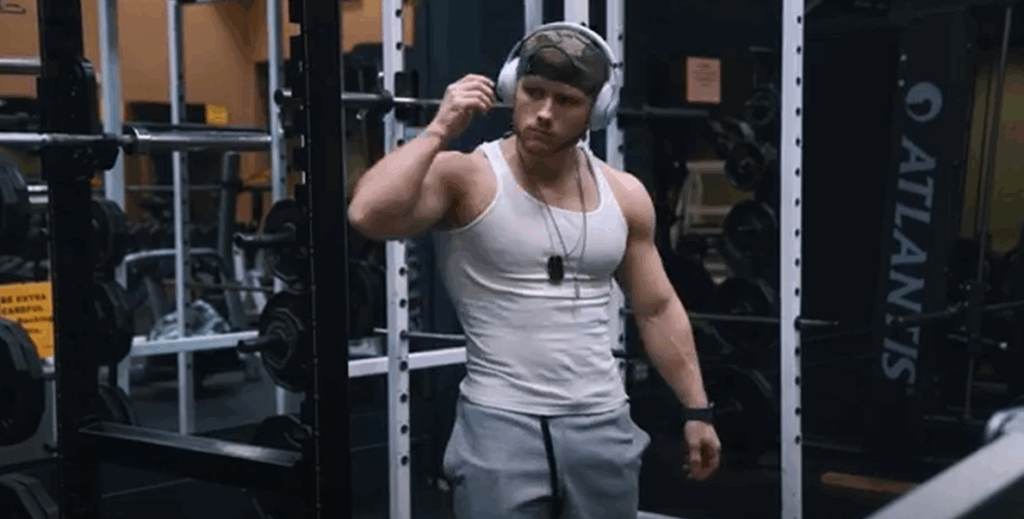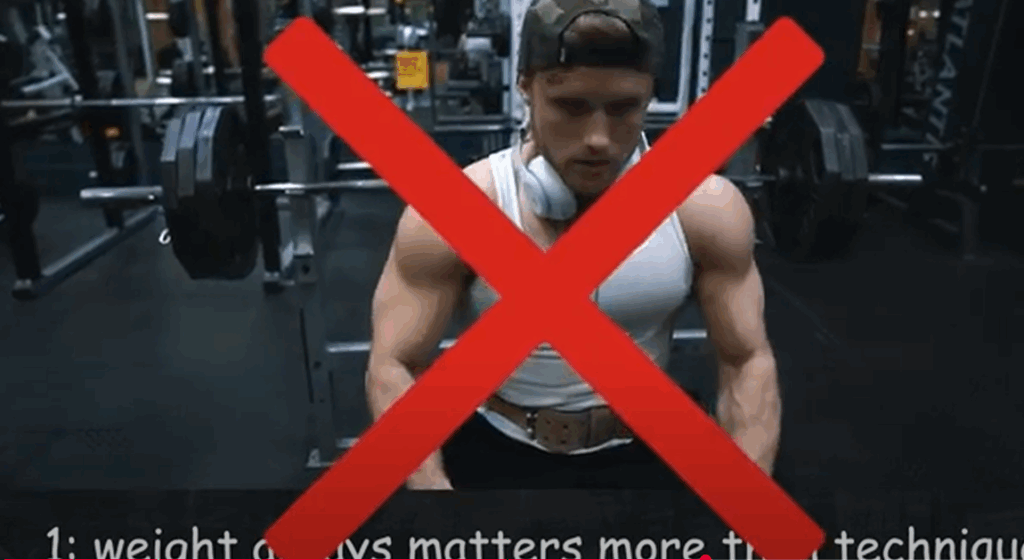In the world of fitness, few things spread faster than bad advice. From overhyped “bro-science” to sensationalized training tips, it can be hard to separate fact from fiction. Recently, a satirical video went viral in which an exaggerated “bro” trainer gave laughably bad lifting advice. While it was meant as a joke, many people—especially those new to training—were confused about what was legitimate and what was nonsense.
In this article, we’ll clear the air by breaking down three common training myths that were humorously exaggerated in that video. We’ll also review what science actually says about proper technique, weight selection, eccentric control, and range of motion so you can maximize muscle growth while staying injury-free.

Why Black-and-White Thinking Fails in Fitness
Before diving into the specific myths, it’s important to understand that in fitness, absolutes rarely exist. Very few training principles are “always right” or “always wrong.” Almost every method has its place, depending on goals, experience level, and individual biomechanics.
Take whole-body vibration training—a method mocked by many evidence-based coaches. While it’s useless for building muscle or burning fat for most people, research shows it can aid tendon healing in specific rehab settings. This illustrates that even seemingly “worthless” methods can have niche applications.
Keeping this in mind, let’s debunk three widespread myths that often mislead beginners.
Myth #1: Weight Is More Important Than Technique
Many gym-goers believe lifting heavier weight is the ultimate key to building muscle. While progressive overload—gradually increasing training stress over time—is essential for growth, technique must come first.
Why Technique Matters More Than “Moving More Weight”
- Muscle Tension vs. Momentum
If your form breaks down as you add weight, you’re not overloading the target muscle—you’re recruiting other muscles and using momentum. This is called progressively cheating, not progressively overloading. - Volume Is Dependent on Proper Execution
Training volume (sets × reps × weight) is often considered the main driver of hypertrophy. But in biomechanics, volume is actually measured as total work done (force × distance). Cutting your range of motion to lift heavier artificially inflates weight without increasing actual muscular work. - Consistency Enables Progress
You can’t track progressive overload accurately if your technique changes every week. Proper form ensures you’re comparing apples to apples.

How Heavy Do You Actually Need to Train?
A common argument against focusing on technique is that you “must lift heavy to grow.” But research shows otherwise. Multiple studies demonstrate similar hypertrophy across a wide range of rep ranges, from 30% to 85% of 1RM, provided you train close to failure.
However, training extremely light (under ~30% of 1RM) is inefficient, and training extremely heavy limits total volume and increases injury risk.
✅ Practical Hypertrophy Zone: Aim for 6–12 reps per set. This range is heavy enough to provide mechanical tension while allowing sufficient volume without excessive joint stress.
Myth #2: The Eccentric (Negative) Doesn’t Matter
The second “bro-science” claim was to ignore the eccentric phase, only focusing on lifting the weight up. Some even suggested having a spotter lift the weight for you, then dropping it back down.
Not only is this unsafe, but it also ignores one of the most effective ways to stimulate muscle growth.
Why You Should Control the Negative
- Greater Mechanical Tension
Muscles are stronger during the eccentric phase than the concentric. By resisting the weight on the way down, you increase time under tension, a key driver of hypertrophy. - Enhanced Muscle Damage and Remodeling
Eccentric contractions create micro-tears in the muscle fibers, which—when repaired—lead to muscle growth. - Improved Muscle Control and Joint Health
Lowering the weight slowly reinforces proper movement patterns, reducing the risk of injury.
How Slow Should the Negative Be?
- General Guideline: 1–3 seconds per eccentric phase.
- Isolation Movements: Actively resist the weight as if trying to “stop” it from lowering.
- Big Lifts (Deadlifts, Squats): Faster eccentrics can be acceptable for efficiency and stretch reflex utilization, but don’t completely relax.
A useful mental cue is to think of the negative as a “failed positive”—you’re trying to lift the weight back up, but gravity slowly wins.
Myth #3: Range of Motion Doesn’t Matter
Cutting range of motion (ROM) to lift heavier weights is a common ego-driven mistake. While partial reps have some application, full ROM should dominate most of your training.
Benefits of Full Range of Motion
- Maximized Muscle Fiber Recruitment – Working through a complete stretch and contraction engages more fibers.
- Improved Flexibility and Joint Health – Full ROM maintains mobility, reducing the risk of overuse injuries.
- More Accurate Volume Measurement – Partial reps often reduce actual work performed, despite heavier weight.
When Are Partials Useful?
- Advanced Lifters: Strategic use of partials (e.g., Spoto press for bench sticking points) can overload specific ranges.
- Finishing Sets: After full-ROM failure, partials can add a few extra “effective reps.”
✅ Golden Rule: Train through the fullest ROM that is safe and comfortable for your joints.

The Role of Hype and Mental Preparation
While the satirical video mocked lifters who scream and hype themselves up for sloppy partial reps, psychological arousal does matter—when paired with proper technique.
- Music, mental cues, and pre-lift rituals can boost performance, particularly in strength athletes.
- Overhype, however, is counterproductive if it encourages ego lifting or poor form.
Putting It All Together: The Smart Training Hierarchy
To maximize muscle growth while staying injury-free, follow this simple hierarchy:
- Technique First – Nail proper form before increasing weight.
- Progressive Overload Second – Gradually increase weight or volume while maintaining form.
- Control Both Phases – Emphasize both concentric and eccentric portions of every rep.
- Use Full ROM – Partial reps should be used strategically, not as a default.
- Stay Within a Practical Rep Range – 6–12 reps per set works best for most hypertrophy goals.
Final Thoughts
The viral “bro-science” video was a joke, but it highlights a real problem in the fitness community: many lifters chase numbers instead of quality movement. Training smarter—not just heavier—will build more muscle in the long run.
Prioritize form, controlled reps, and progressive overload, and you’ll not only see better results but also stay healthier and more consistent over time.



